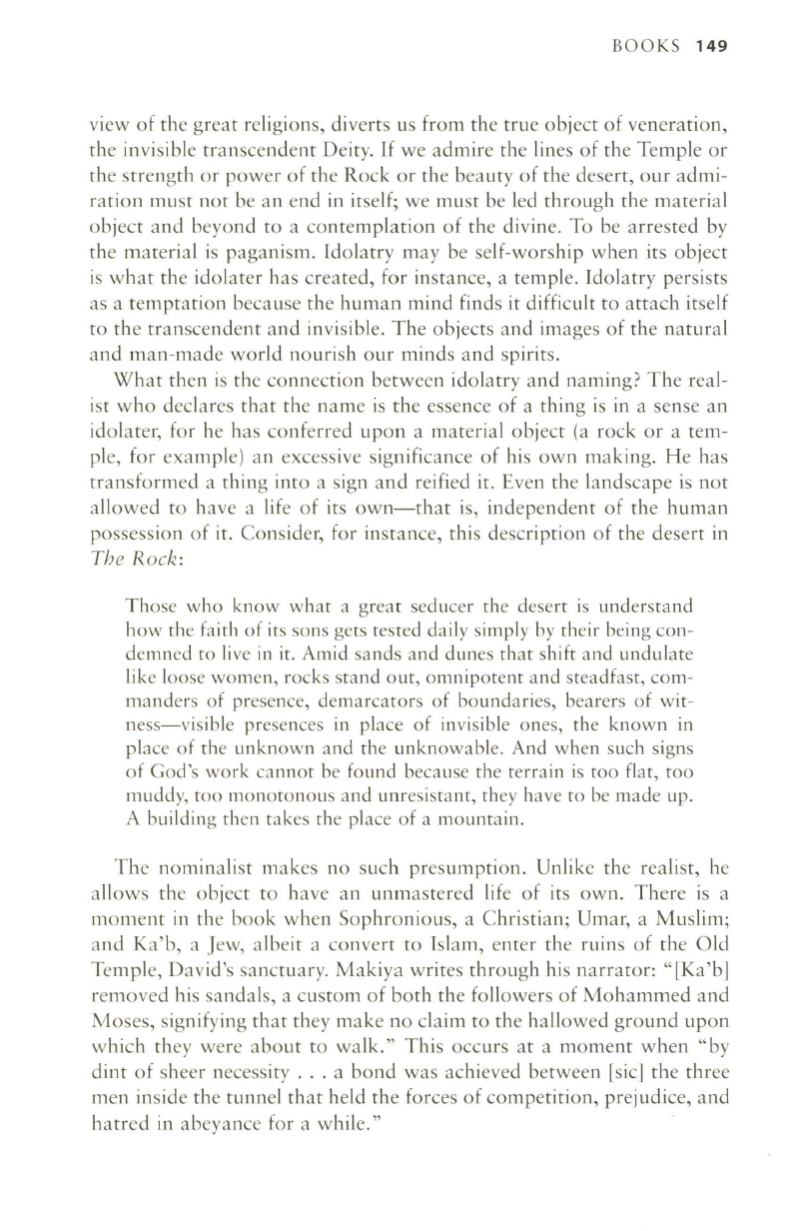
BOOKS
149
view of the great religions, diverts us from the true object of veneration,
the invisible transcendent Deity.
If
we admire the lines of the Temple or
the strength or power of the Rock or the beauty of the desert, our admi–
ration must not be an end in itself; we must be led through the material
object and beyond to a contemplation of the divine. To be arrested by
the material is paganism. Ido latry may be self-worship when its object
is what the idolater has created, for instance, a temple. Idolatry persists
as a temptation because the human mind finds it difficult to attach itself
to the transcendent and invisible. The objects and images of the natural
and man-made world nourish our minds and spirits.
What then is the connection between idolatry and naming? The real–
ist who declares that the name is the essence of a thing is in a sense an
idolater, for he has conferred upon a material object (a rock or a tem–
ple, for example) an excessive significance of his own making. He has
transformed a thing into a sign and reified it. Even the landscape is not
allowed to have a life of its own-that is, independent of the human
possession of it. Consider, for instance, this description of the desert in
The Rock:
Those who know what a great seducer the desert is understand
how the faith of its sons gets tested daily simply by their being con–
demned
to
live in it. Amid sands and dunes that shift and undulate
like loose women, rocks stand out, omnipotent and steadfast, com–
manders of presence, demarcators of boundaries, bearers of wit–
ness-visible presences in place of invisible ones, the known in
place of the unknown and the unknowable. And when such signs
of God's work cannot be found because the terrain is too flat, too
muddy, too monotonous and unresistant, they have
to
be made up.
A building then takes the place of a mountain.
The nominalist makes no such presumption. Unlike the realist, he
allows the object to have an unmastered life of its own. There is a
moment in the book when Sophronious, a Christian; Umar, a Muslim;
and Ka'b, a Jew, albeit a convert to Islam, enter the ruins of the Old
Temple, David's sanctuary. Makiya writes through his narrator: "[Ka'b]
removed his sandals, a custom of both the followers of Mohammed and
Moses, signifying that they make no claim to the hallowed ground upon
which they were about to walk." This occurs at a moment when "by
dint of sheer necessity ... a bond was achieved between [sic] the three
men inside the tunnel that held the forces of competition, prejudice, and
hatred in abeyance for a while."


